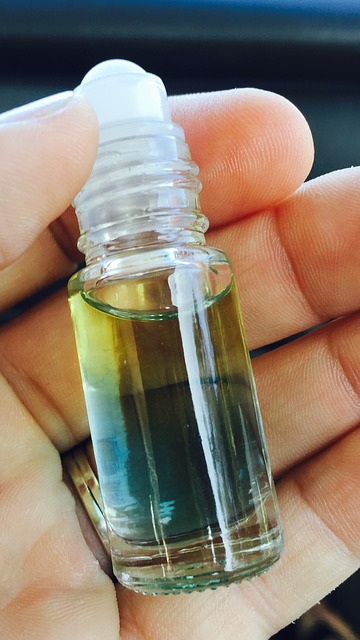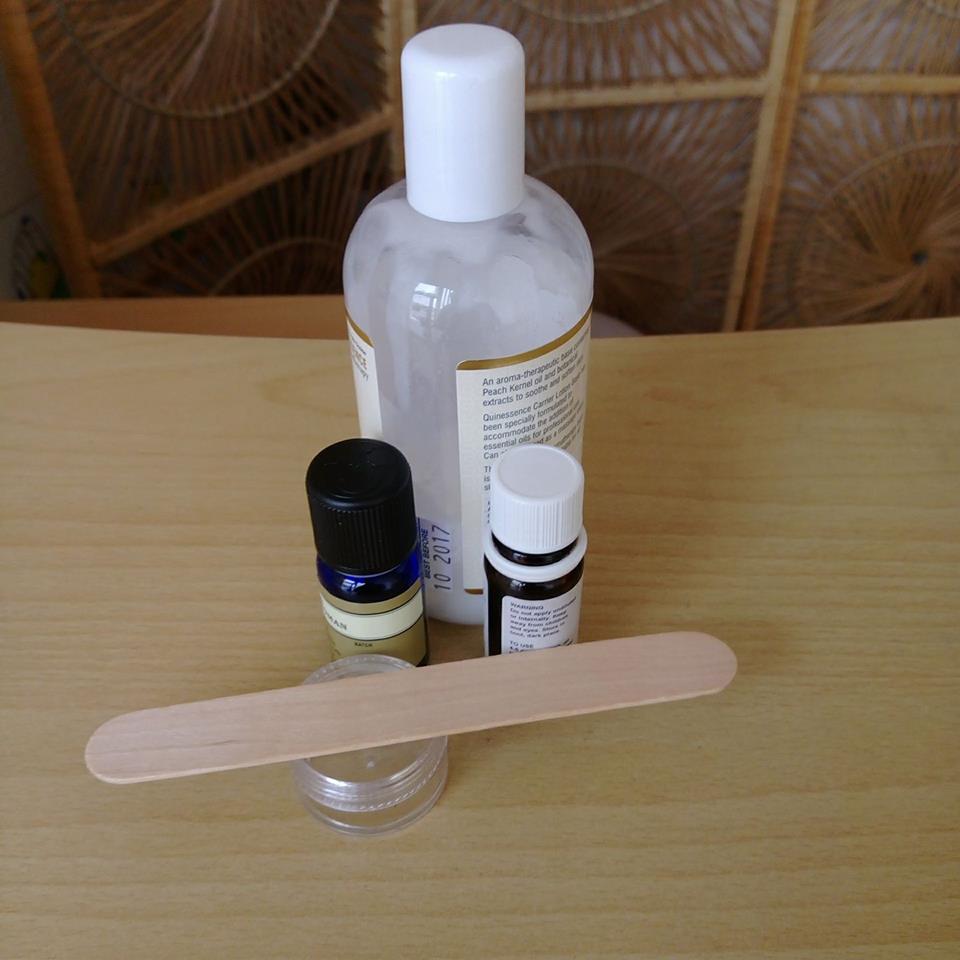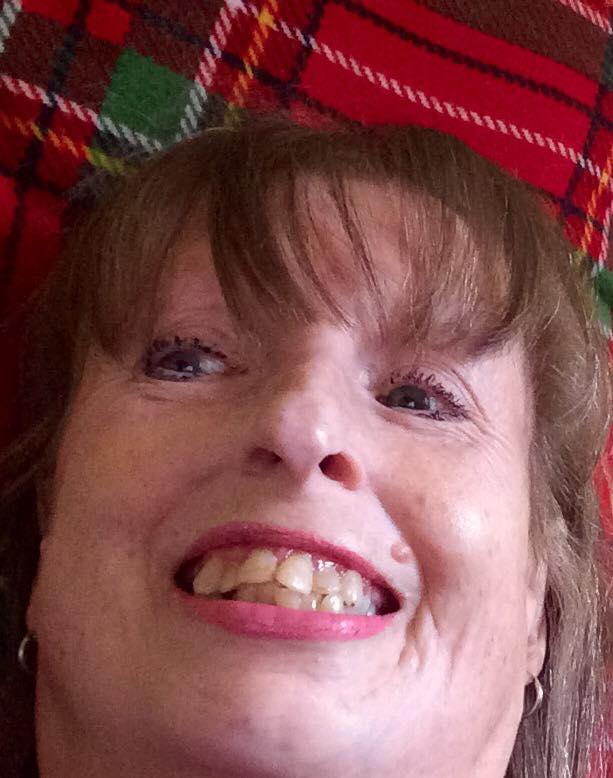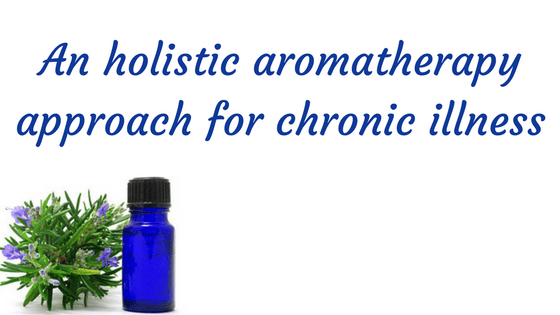This blog post is a guest post for Honeysuckle Healing. The content arose after twitter feedback asking for information about how to use essential oils most effectively, how they can help with spasms, clear thinking, insomnia and other symptoms people living with multiple sclerosis may have,
I call myself an holistic therapist because when you book for an appointment we’re looking at you. You are still you, but you’re living with a diagnosis or set of issues that are affecting your day to day quality of life. During our consultation we go through the issues you’re experiencing and what your priorities are. I can’t change your diagnosis, but I can help you try to manage it a little better. An aromatherapy appointment is bespoke, it’s about listening to you and identifying the best mix of oils for you. Some aromatherapists may read the below suggested oils and think of others which they would consider more appropriate, I’ve chosen ones which are generally safe, there are always other choices of oils and the ones mentioned here are not an exhaustive list.
Do you have insomnia, or is your insomnia caused by your spasms which are painful and keeping you awake?
 Working out if your insomnia is a result of something else may affect the choice of oils we use. If your insomnia is because you can’t settle, then an oil such as roman chamomile (Anthemis noblis or Chamaemelum nobile) or lavender (Lavendula angustifolia) may be useful. If your mind is racing and you’re overthinking things then adding some Jasmine (Jasminum grandiflorum) may help. Everyone thinks lavender is calming and it has been shown to work on neurotransmitters in the brain, but if someone has a condition such as ADHD then it may not be effective. If you’re looking to use an essential oil for bedtime you can keep things cheap by putting a few drops on a cotton wool ball and placing it next to your bed. Be sure to make sure any animals or children won’t be able to pick it up and that you’re not going to roll onto it in the night! If you do have children or pets, you can also make up a roller ball with essential oils diluted into a carrier oil, such as sunflower or sweet almond oil and then apply it to your pulse points.
Working out if your insomnia is a result of something else may affect the choice of oils we use. If your insomnia is because you can’t settle, then an oil such as roman chamomile (Anthemis noblis or Chamaemelum nobile) or lavender (Lavendula angustifolia) may be useful. If your mind is racing and you’re overthinking things then adding some Jasmine (Jasminum grandiflorum) may help. Everyone thinks lavender is calming and it has been shown to work on neurotransmitters in the brain, but if someone has a condition such as ADHD then it may not be effective. If you’re looking to use an essential oil for bedtime you can keep things cheap by putting a few drops on a cotton wool ball and placing it next to your bed. Be sure to make sure any animals or children won’t be able to pick it up and that you’re not going to roll onto it in the night! If you do have children or pets, you can also make up a roller ball with essential oils diluted into a carrier oil, such as sunflower or sweet almond oil and then apply it to your pulse points.
If your insomnia is being caused due to spasms then it’s worth us having a discussion about the spasms. Are they all day, at certain times, all over your  body, or certain areas? If it’s all over, then it may be we discuss a full body massage or oils added to a bath. If it’s certain areas we can make products which can be cream based or oil based depending on your preference. Does your pain have a heat to it? It may be a cooling aloe vera gel base may be appropriate. This is when it becomes more specialised, as the dilution will vary depending on your pain levels and the amount of area to be covered. Initially we may begin with a high dilution to help manage your pain levels, and then, once we have the right mix of oils and your pain feels more manageable we would look to decrease the blend dilution to something that is more of a maintenance level. Oil choice will be dependant on the pain, whether it’s constant and more in the morning or the evening – you won’t want a stimulating pain-relieving oil to apply in the evening if you’re already dealing with insomnia.
body, or certain areas? If it’s all over, then it may be we discuss a full body massage or oils added to a bath. If it’s certain areas we can make products which can be cream based or oil based depending on your preference. Does your pain have a heat to it? It may be a cooling aloe vera gel base may be appropriate. This is when it becomes more specialised, as the dilution will vary depending on your pain levels and the amount of area to be covered. Initially we may begin with a high dilution to help manage your pain levels, and then, once we have the right mix of oils and your pain feels more manageable we would look to decrease the blend dilution to something that is more of a maintenance level. Oil choice will be dependant on the pain, whether it’s constant and more in the morning or the evening – you won’t want a stimulating pain-relieving oil to apply in the evening if you’re already dealing with insomnia.
Do you get a foggy head at certain times of the day or is it constant?
Clear thinking can be encouraged with oils such as basil (Ocimum basilicum), rosemary (Rosmarinus officinalis) and black pepper (Piper nigrum) through inhalation. I’ve been asked if inhalation is actually a good way of using essential oils – it’s actually a great way to use essential oils, as the lungs are only one cell thick, so the essential oil components can get into the blood stream much more easily than if we put it on the skin. A few drops of each of these oils can be put in a little nasal inhaler that you can open and sniff when needed, or you can add a few drops to a tissue or cotton wool ball and inhale it through your nose. The nasal inhaler is a great choice if you’re going out and about and you want something in your pocket, you can get them made up by an aromatherapist or you can buy the nasal inhalers online to add your own oils. If you’re staying in one place you can put the oils in a diffuser, which is a great way of gently adding the oils to the air. Good hygiene is to put the diffuser on for an hour and then turn it off for the same amount of time, so you do not overload your body and give yourself a headache. If you’re planning to use this combination of oils on your skin, it may cause sensitivity and should be diluted properly. Due to the nature of the oils, these are best suited to daytime use and I’d recommend avoiding them in the evening if you do have insomnia.
Different essential oils have different chemical components so we begin with ones we expect to have a high level of success and then adjust the quantities and mix based on how you respond. Each person is individual, so we start somewhere and begin a journey. I appreciate complementary therapies are expensive and it can be difficult to justify them when you don’t know how they’ll work, but when people visit me for the first time I can’t make any promises, except that if we’re going on a journey together I’ll do my best to help, and if I can’t I’ll let you know so you don’t waste your money.
Does it work? I can’t offer false hope, it’s irresponsible, it goes against the advertising standards agency and there’s not enough scientific proof, but the research around essential oils is growing. If it’s something you’re interested in, you can read about published essential oil research in PubMed, which is an online resource. The studies are growing, amongst many others we now have research about using sweet orange for anxiety, using rosemary to help cognitive function with dementia, using lavender to help shift workers, and recently that sniffing lemon essential oil in pregnancy can help morning sickness.
But, I’ll be honest, I can’t help everyone. Some people have identified so much with their illness that they can’t see through it. Part of being holistic is looking at the whole you; regular sessions are designed to help faciltate empowering you, and I can’t help you do that if you can’t. When you have a devastating diagnosis you begin to go with the flow, you become part of a process and you will have things done to you. And that’s ok, that’s part of what needs to be done, but after the process has begun it’s about finding you find a new space. Some clients arrive having tried everything, nothing has worked. This probably won’t either, as your mind is made up and you’re not identifying with you, you’re with your illness.
Give me an open mind, and we can work with it. I have clients who didn’t notice the changes that have been happening – until I’ve pointed out they’ve not been in bed every day that week, or that their days have been ok when previously they were awful. I’ve had fibromyalgia clients tell me their pain hasn’t been too bad and its now more concentrated, arthritis clients tell me their new blend is helping and the pain is more manageable. There is change, but because it may be gradual or subtle you may miss it, and part of my job is to help you connect to your body so you notice the subtle changes and messages it is giving you. You probably won’t be able to do things in the same way you used to, but if you listen to your body it will work with you – if you want to swim, start off slowly. Two or three lengths may sound hardly anything compared to how you used to swim, but remember, things have changed and you have changed. It’s not all or nothing, it’s doing things to support you. Feel ok doing two or three lengths? Add an extra length a month and check in with your body to make sure it’s ok about the change. Slow steady progress can make massive changes over time. If you try to go from two to ten lengths the chances are you will wipe yourself out, become disillusioned, downhearted and resent your illness again. So many people managing a chronic illness find that once they adjust their mindset and set small steady realistic goals, it becomes more achievable.
I’ll leave you with one of my own clients, who is more than happy for me to tell you about her. Vanessa has scleroderma, and this week she informed me she now feels we’ve reached a maintenance level. I’ve been seeing her on and off since she became a case study for me as an aromatology student over 6 years ago. I first saw her with digital ulcers and the recommendation she had her fingers amputated. The picture of Vanessa’s hand shows you one of  the digital ulcers; when I first met her she had them on most of her fingers. If you don’t know much about scleroderrma, it’s a progressive illness and is a hardening of the connective tissues which can be anywhere in the body, internal or external, and after five years it’s usually pretty severe. Vanessa has been living with scleroderma for over ten years and uses different approaches. She has her down points – she finds consultant appointments disheartening, as they tell her the progression of her heart disease and internal damage; and a big low point was when the police had to break into her home so she could be lifted from the floor. She had deteriorated badly and it saw her in hospital for some time. But she refuses to be beaten and is defiant.
the digital ulcers; when I first met her she had them on most of her fingers. If you don’t know much about scleroderrma, it’s a progressive illness and is a hardening of the connective tissues which can be anywhere in the body, internal or external, and after five years it’s usually pretty severe. Vanessa has been living with scleroderma for over ten years and uses different approaches. She has her down points – she finds consultant appointments disheartening, as they tell her the progression of her heart disease and internal damage; and a big low point was when the police had to break into her home so she could be lifted from the floor. She had deteriorated badly and it saw her in hospital for some time. But she refuses to be beaten and is defiant.
After she had moved to a downstairs flat she asked me if I could give her regular therapies and for over a year she’s been having hot stone massages with essential oils. While we can’t do anything on the inside, we can use hot stones and essential oils to keep her walking and hanging her clothes on a washing line, we used hydrolats to manage digital ulcers and avoid amputation, and we keep her smile – every week I leave her with a smile on her face, which after this amount of time, with how her illness progresses, is something she probably shouldn’t have.

This is a photo of Vanessa smiling when I left her 10th October, when I sent her a copy of what I’d written and if she was happy for it to be published, she said, “Perfect xx not forgetting that I’m going for my first TT session today. Which is something I couldn’t have done without you!”. TT? She’s off on some toning tables, her next goal is to be able to crouch down a little & they should help tone her glutes and leg muscles. By next year, with her determination I think she may achieve it. If she changes her mind and decides not to go for it? It’s absolutely fine, she can change her mind at any point, but until then, if she wants encouragement, hot stone massages and essential oils, I’ll be happy to continue supporting her.
 Louise is an holistic therapist who owns the Therapy Centre, Bristol, BS14 9HB, a clinic offering a range of holistic and beauty therapies. Louise offers reflexology, aromatherapy, aromatology, holistic massage, Indian head massage, reiki, baby massage and story massage. She is a mum of two boys and when she is not working she enjoys getting outdoors with her family. For further information visit louise-morgan.co.uk or contact her clinic on 01275 217160
Louise is an holistic therapist who owns the Therapy Centre, Bristol, BS14 9HB, a clinic offering a range of holistic and beauty therapies. Louise offers reflexology, aromatherapy, aromatology, holistic massage, Indian head massage, reiki, baby massage and story massage. She is a mum of two boys and when she is not working she enjoys getting outdoors with her family. For further information visit louise-morgan.co.uk or contact her clinic on 01275 217160

